The end of summer doesn’t have to mean the end of color in the garden. With bright annuals, you can rejuvenate the autumn garden and extend the growing season until the winter winds blow.
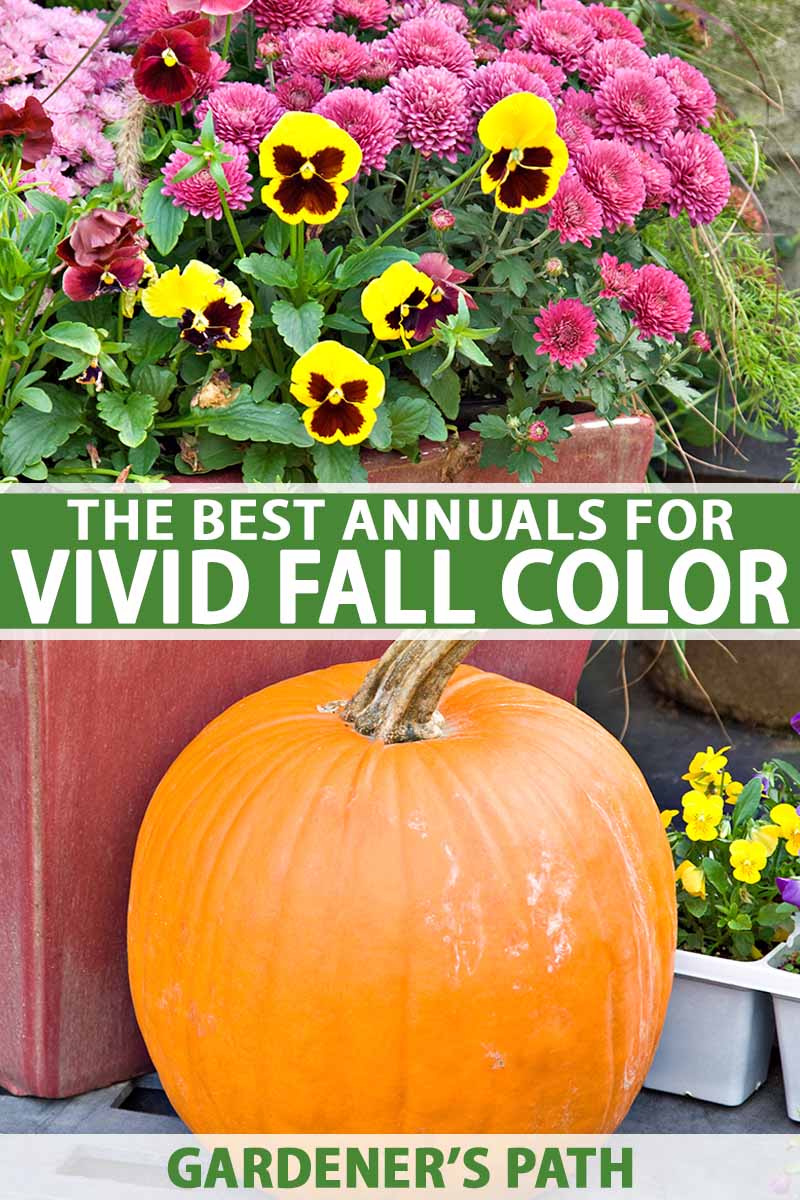
We link to vendors to help you find relevant products. If you buy from one of our links, we may earn a commission.
Read on to discover 15 plants that are either true annuals, or tender perennials commonly grown as annuals, with vivid hues that shout, “Welcome, fall!”
Best Annuals for Vivid Fall Color
1. Calendula
Calendula, Calendula officinalis, aka pot marigold, is actually a tender perennial in warm climates, but it is widely grown as an annual in cool locales. Sow seeds in spring for richly-hued orange, yellow, and peach blossoms right through fall.
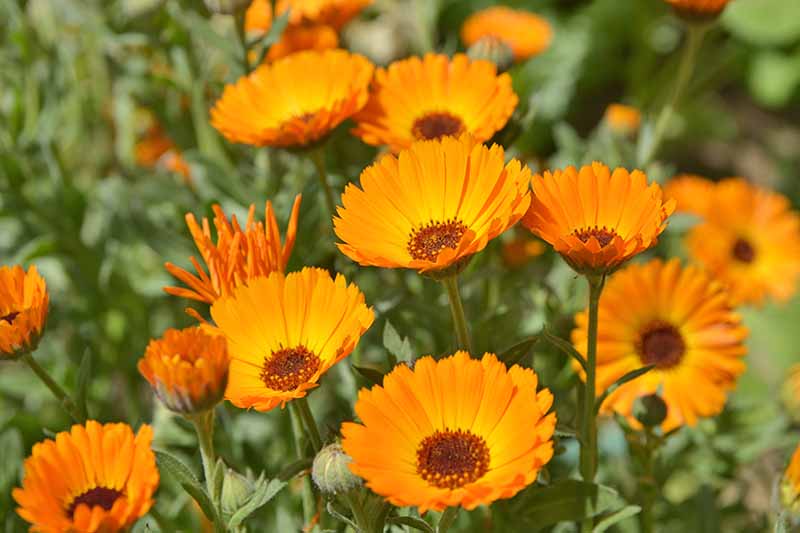
Heights range from dwarf to approximately two feet. And you can deadhead spent blossoms to encourage blooming throughout the growing season.
Calendula seeds are available from Eden Brothers in a variety of hues, petal configurations, and sizes.
Read more about growing pot marigolds here.
2. Cardinal Climber
I’m sure to get a few comments about including cardinal climber, Ipomoea sloteri, because it can become invasive.
A hybrid created by Logan Sloter of Columbus, Ohio, this cross between a red morning glory (I. coccinea) and a cypress vine (I. quamoclit) was created by hand pollination. It’s also known as I. x multifida.

Often called cypress vine, its flowers are brilliant red trumpets, and its leaves clearly represent both species, with both a heart-shaped and a feathery formation.
What’s fun about this plant is that it’s a vigorous grower that will happily climb a trellis or spread out across a fence from summer until frost, punctuating the landscape with invigorating red blossoms. It does self-sow, so beware.
Seeds are available from Eden Brothers.
Read more about growing cardinal climber here.
3. Celosia
Tall, long-lasting plumes of Celosia argentea var. plumosa and cockscomb-style C. argentea var. cristata come in deeply saturated hues of burgundy hot pink, orange, red, and yellow with a velvety texture.
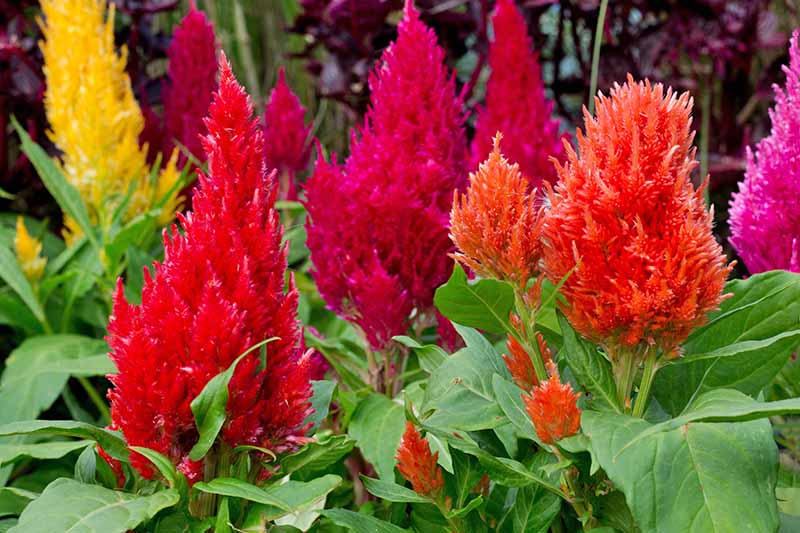
Sow celosia in spring for blooming straight through fall. Heights reach up to two feet.
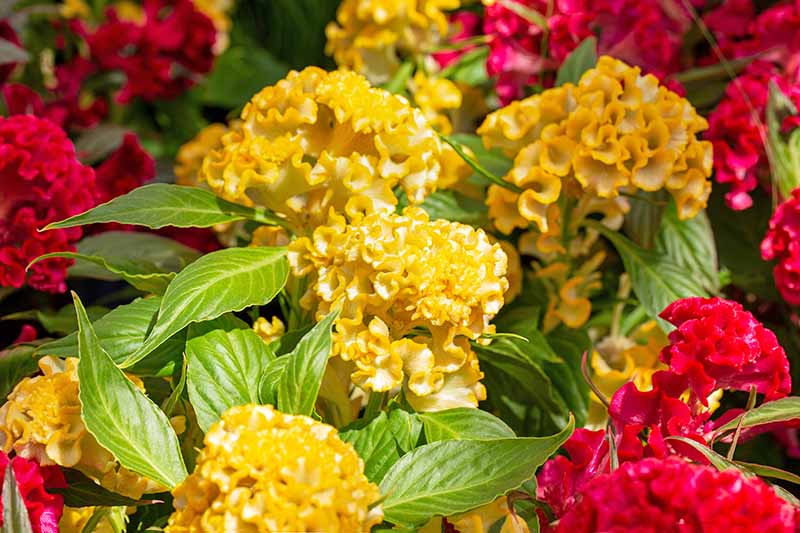
Celosia are tender perennials that are generally grown as annuals. Deadhead to promote optimal blooming throughout the growing season.
Assorted plume and cockscomb plants and seeds are available from Burpee.
Read more about growing celosia here.
4. China Aster
Unlike most asters, China aster, Callistephus chinensis, is not a perennial, but a tender annual that blooms from spring planting until the first frost. In my region of Pennsylvania, that’s generally around mid-November.
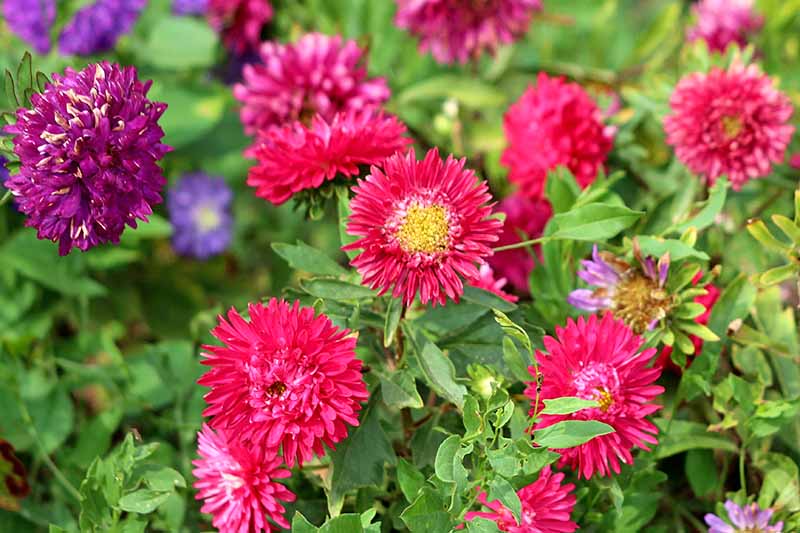
With heights of up to three feet and a jewel-tone palette that ranges from white and yellow to shades of red and blue, China aster is sure to liven up the fall garden.
Be sure to deadhead to encourage blooming.
China aster seeds are available from Eden Brothers in an array of shades.
Read more about growing China asters here.
5. Garden Mum
For a true autumn classic, look to the garden mum, Chrysanthemum, for dense blossoms in shades of burgundy, lavender, orange, rust, white, and more, often with contrasting centers for a daisy-like appearance.
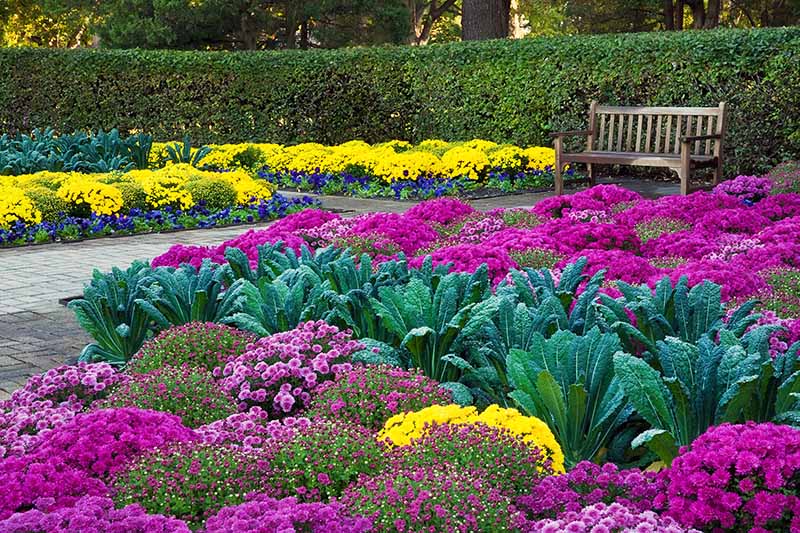
This tender perennial is grown as an annual in cool-weather fall landscapes, because it is readily available in nurseries and need only be placed in the ground or decorative container for instant curb appeal.
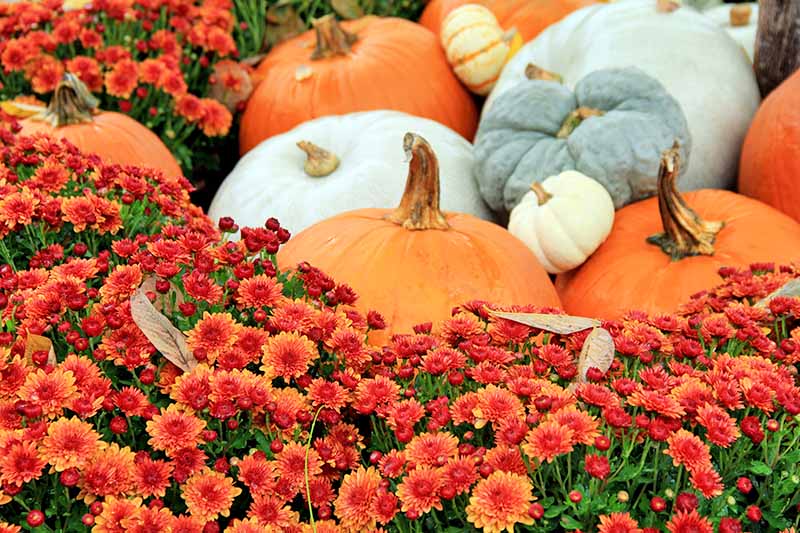
A typical harvest display in my neighborhood consists of a bale of hay, a scarecrow or two, pumpkins, and assorted mums. It doesn’t get much easier than that.
Garden mum plants are available from Burpee.
Read more about growing chrysanthemums here.
6. Kohlrabi
When attractive hues are what you seek, don’t forget about vegetables.
Kohlrabi, Brassica oleracea gongylodes, doesn’t just come in shades of green. How about a variety with purple globes and purple stems 18 inches tall, for a structural focal point? Not only does it jazz up the garden, it tastes good, too!

As with other cool weather crops, like broccoli and cauliflower, you may plant kohlrabi in spring for a summer harvest, and again in late summer, for autumn interest and food for the table from fall into winter.
‘Purple Vienna Organic’ kohlrabi seeds are available from Burpee.
Read more about growing kohlrabi here.
7. Ornamental Gourd
Nothing says fall like decorative gourds.

Today’s cultivars come in assorted shapes and sizes. And you’ll be surprised by a host of hues ranging from orange and yellow to green and white, with mottled, striped, bumpy, smooth, and two-toned characteristics that make unique focal points in the waning summer garden.
They’re especially fun for gardening with children, as the vines wind around the yard and the fruits begin to show their unique qualities.
Sow seeds in May for an autumn harvest. Expect maturity between 110 and 130 days.
Ornamental gourd seed is available from Burpee.
Read more about growing gourds here.
8. Ornamental Kale
Ornamental kale, B. oleracea acephala, is the perfect fall and winter “flower.” With pigmentation ranging from green to purple, and green with pink centers, you’ll never have a drab garden.
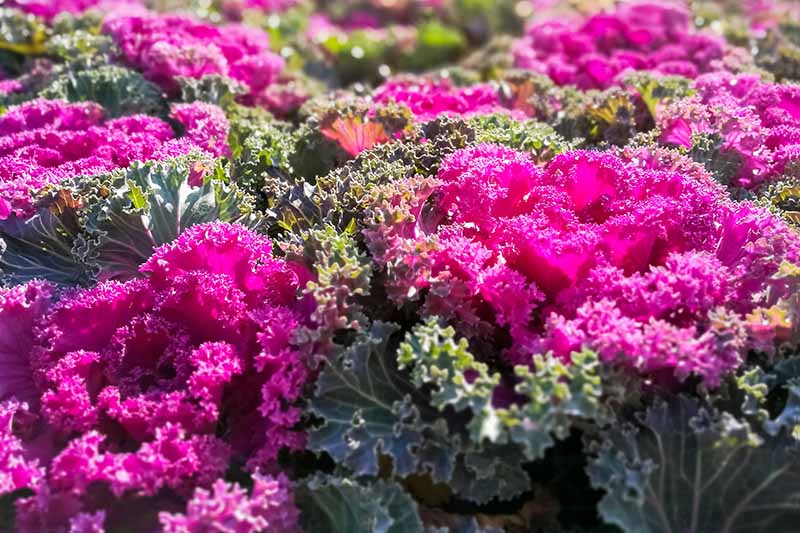
Lovers of cool weather, as the temperature dips, the curly foliage grows more vibrant, defying the onset of winter for lasting appeal.
Direct sow plants from September to October, or start seed indoors from late August to September and transplant outdoors in fall.
Expect a mature height of up to 10 inches. Ornamental kale is edible, but doesn’t usually taste as good as eating varieties.
Plants and seeds are available from Burpee.
9. Ornamental Pepper
Like tiny Christmas tree lights, ornamental pepper, Capsicum annuum, decorates autumn landscapes. It does exceptionally well in containers, as its growth habit is compact, with a height of 10 to 12 inches.
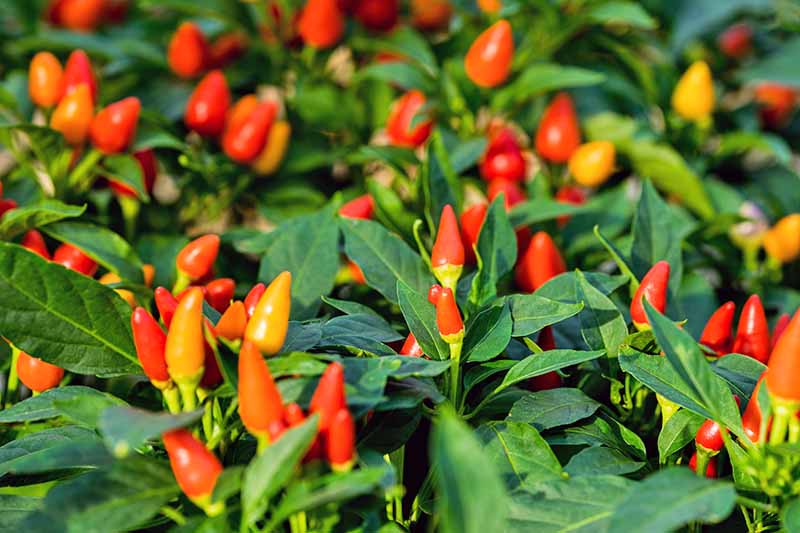
Peppers bred for ornament rather than consumption are still edible, but they haven’t been bred for flavor, so you probably won’t want to eat them. However, most are hot, so don’t rub your eyes after you’ve handled them, and use caution if you do choose to taste them.
An exception is the ‘Chilly Chili’ variety. It starts out greenish, and turns yellow, orange, and then deep red, without the heat. I recommend this type for folks with children and pets.
Ornamental pepper ‘Chilly Chili’ seed is available from True Leaf Market.
10. Pansy
Hardy pansy, Viola tricolor var. hortensis, is a member of the violet family that may be grown as an annual, biennial, or perennial, depending upon your USDA Plant Hardiness Zone.
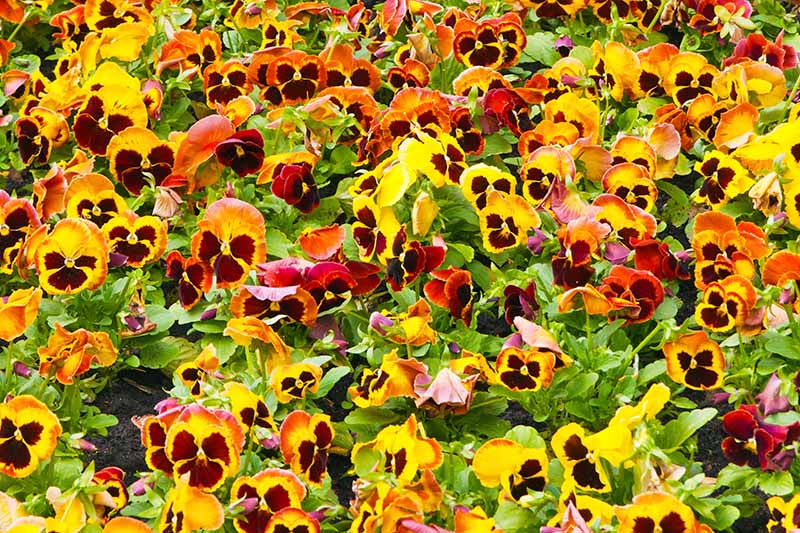
You may sow seed in spring, and deadhead to keep plants from getting leggy during the summer. However, the pansy is not a fan of intense heat, and may not live through fall if it has to endure a hot spell.
In my region of Pennsylvania, we put plants in the ground each year at summer’s end for color through fall and early winter.
A mass planting of pansies creates a plush, velvety carpet. The showy petal markings resemble cheerful faces with multi-hued schemes. Blossoms rest atop low-profile plants that top out at four to six inches.
Pansy seeds are available from Burpee.
Read more about about growing pansies here.
11. Pinks
There are hardy annual varieties of dianthus, Dianthus spp., as well as biennials and perennials that may be grown as annuals in cool climates.
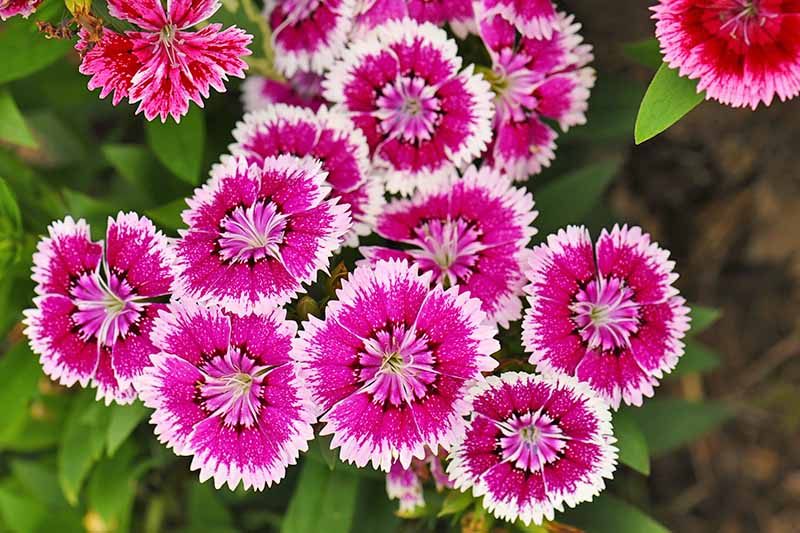
Choose from lush burgundy and pink to white and red, with bi-color varieties available as well. Heights range from a low-profile six inches to 18 inches.
Deadhead plants all summer long to keep them from going to seed, and you’ll have fall blooms. Alternatively, purchase plants in fall to pop into the ground for instant color.
Plants and seeds are available from Burpee.
Read more about growing pinks and other types of dianthus here.
12. Purple Fountain Grass
Ornamental grasses may be annual or perennial, with pigmentation ranging from yellow and green to blue, pink, purple, and red.
Purple fountain grass, Pennisetum setaceum, is an annual that provides deep color saturation and texture from spring until frost.
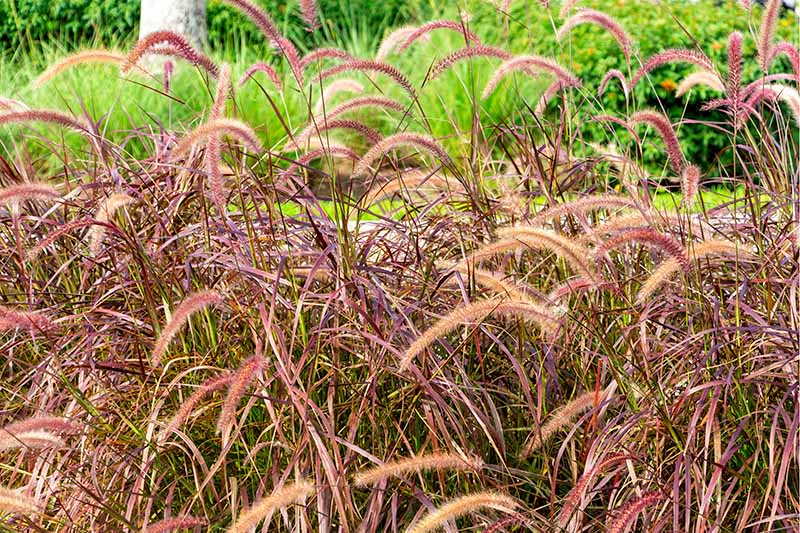
To cultivate, start seed indoors as early as February, or pop plants into the ground at any time during the growing season.
You’re sure to enjoy the rustle of autumn wind through the wispy foxtails of purple fountain grass in your beds, borders, and containers. It tops out at about three feet tall.
Plants are available from Burpee.
Read more about purple fountain grass here.
13. Snapdragon
From six-inch dwarf varieties to towering three-foot-tall specimens, common snapdragon, Antirrhinum majus, is an excellent choice for enduring color from spring through fall.
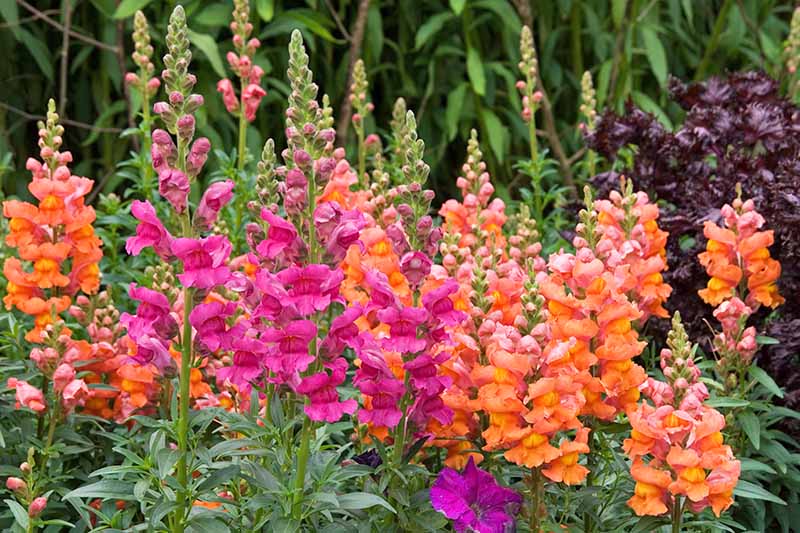
With a rainbow of choices, select from pastels to neon shades, as well as bi-color varieties with bold contrasting striations.
Classified as a tender perennial, snapdragon is grown most often as an annual. Start seeds in spring after the last frost date, and deadhead throughout the summer to keep plants blooming until the first hard frost.
Seeds are available from Eden Brothers.
Read more about growing snapdragon here.
14. Swiss Chard
For edible autumn color, consider planting swiss chard, Beta vulgaris. Glossy green leaves have stems and veins of gold, white, and magenta, for eye-catching appeal. Two-foot-tall stalks make a strong linear statement in beds and borders.

This is a cold-weather crop. You may sow it twice during the growing season: once in early spring, four to six weeks before the last frost date, and again about six weeks before the first frost date in fall.
Seeds are available from Eden Brothers.
Read more about growing Swiss chard here.
15. Strawflower
Strawflower, Helichrysum bracteatum, is an unusual plant in that its petals feel like those of a dry arrangement, hence the name. It exhibits exceptional heat and drought tolerance.

Choose from dwarf varieties of about 15 inches in height to giants that top out at over three feet. Colors range from white and pink to red, orange, and yellow, with matching or contrasting centers.
Seeds are available from Eden Brothers.
Read more about growing strawflowers here.
Robust Color Your Way
And there you have them: 15 plants to energize the fall garden that don’t mind a refreshing nip in the air, and a little frost on the pumpkin.
Are you ready to turn your landscape’s faded glory into a robust feast for the eyes?
Whether you encourage a late flush of summer plants, sow seeds in summer, or pop plants into the ground or containers in fall, you’re sure to enjoy extending the growing season right up until the snow flies.
For more on the best plants to celebrate fall in your garden, check out these articles:
- Fall Annuals for the South
- The Best 15 Woody Shrubs for Fall Color
- Put Some Color into Your Fall Landscaping
- The 15 Best Perennials for Fall Color
© Ask the Experts, LLC. ALL RIGHTS RESERVED. See our TOS for more details. Uncredited photos: Shutterstock.
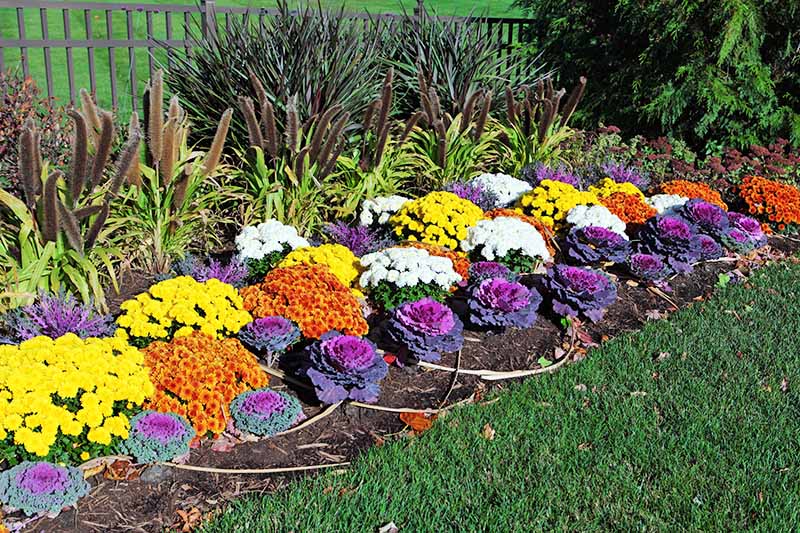
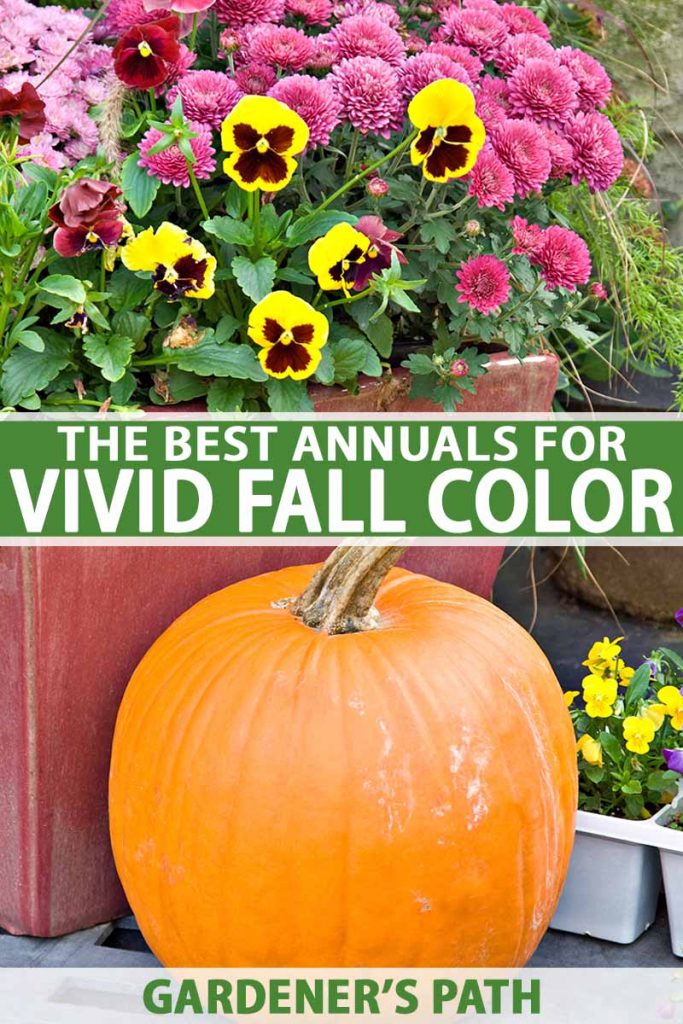
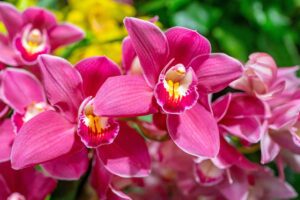
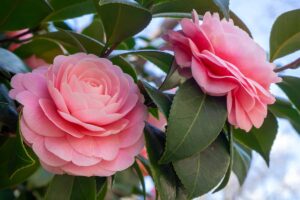
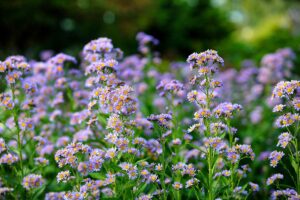
We planted ornamental kale in planters sometime ago. They developed into tiny Christmas trees nearing the end of the season. Are they still available?
Where to find ornamental kale that develops into tiny Christmas trees towards end of season.
Hello Ellis –
While we are unable to locate an ornamental kale that meets your description, we can tell you that plant stems elongate during the growing season, especially in the event of a warm spell. This may be the reason for the Christmas tree appearance, which you could trim into shape late in the season for a decorative holiday look. A nice ornamental type you may like is ‘Song Bird Red,’ available from Burpee.
Update: The plant you seek is likely ‘Color Up’ – a purple hybrid ornamental cabbage with a columnar growth pattern.